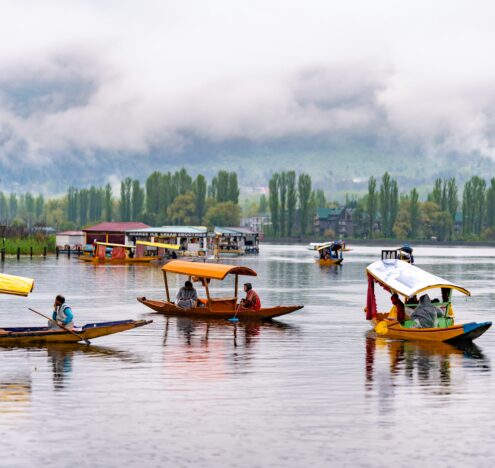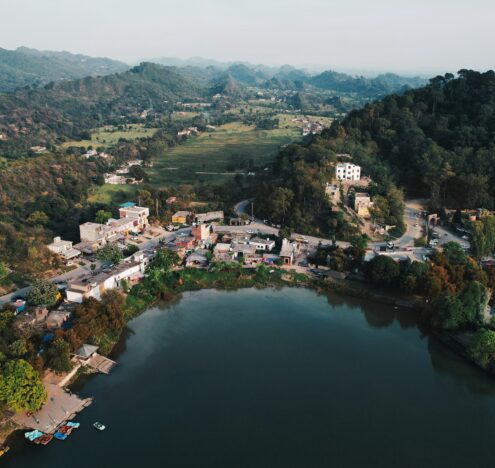The geopolitics of critical technologies like artificial intelligence, 5G, and information and communication technologies are often discussed in the Indo-Pacific. But one crucial sector that usually remains below the surface — literally — is that of submarine cables.
The submarine cables are estimated to carry around 99% of Internet traffic. In 2022, approximately 450 submarine cables existed worldwide that link Asia, Europe, Africa, and North and South America. In 2023, the estimate is 500. As the world continues to connect at the bottom of the ocean, these cables are becoming another site of geopolitics.
The global trend to securitize all major telecommunication sectors is linked to the US-China strategic rivalry and the rise of critical technologies as part of national security. States now are more aware and particular about the security of their digital infrastructure from communications network like 5G or surveillance cameras. Similarly, submarine cables are now seen as part of digital infrastructure that controls the mobility of information and data, which are critical for state security.
Many governments, like the United States, China, Australia, and Japan, are taking steps to secure their respective networks. However, some countries are still oblivious to the emerging security threat of the possibility of compromised submarine cables — India is one of them. The absence of any serious discussion on the issue in India points to an old habit: wait for security to be compromised, then react.
India’s reactionary attitude is outdated, and won’t be able to keep up with the evolving definition of national security that now includes cyberspace, telecommunication infrastructure, and fiber cables. In today’s world, it is incumbent on the state to take preventive measures addressing undersea geopolitics. India has increasingly seen risks emanating in cyberspace in the form of ransomware, cyber espionage, and attacks on critical cyber infrastructure, all of which have brought forward the vulnerabilities in its cybersecurity, and demonstrate the seriousness with which India views China.
COUNTERING CHINA UNDER THE SEA
Countries in the region have noted the securitization of the 5G sector, specifically related to semiconductors, surveillance technologies, and rare earth materials. As national security increasingly becomes linked to critical emerging technologies, Quad members — the United States, India, Australia, and Japan — with other US allies like South Korea and Taiwan, have shown interest in working together to ensure resilient, trustworthy, and secure supply chains across different sectors.
The current scenario of undersea geopolitics gives India an opportunity to do a regulatory overhaul by removing bureaucratic obstacles and improving its regulatory system,
While this multilateral cooperation on undersea submarine cables within the Indo-Pacific is welcome, it is primarily driven by competition with China. This trend is similar to the one that followed surveillance cameras from China. In 2020, the United States banned and prohibited their sale and import, which was followed by the United Kingdom and Australia. Such a pattern points toward a tendency by states to raise “security concerns” about these technologies, which in turn has a domino effect on other countries, and soon we see restrictions emerging on the use of technologies.
However, restrictions don’t solve other security problems. For example, US Federal Communication Commission’s commissioner Geoffrey Starks expressed his concerns regarding the safety of undersea cables. Google and Facebook were not permitted to access Pacific Light Cable Network’s Hong Kong section, owned by China, due to security considerations. They were only allowed access to the Taiwan and Philippines section, which were “owned and controlled” by subsidiaries of both corporations. The withdrawal of two Chinese telecom operators from the Sea-Me-We-6 Pipeline investment signals that the United States is taking an edge over China in the sector.
Australia supported Pacific Island states like Nauru to connect to submarine cables as a way to counter Chinese companies that created the infrastructure in Guam, Sydney, and Hawaii. The complete acquisition of Digicel Pacific, which operated mobile telecommunication infrastructure in many Pacific states like Samoa, Tongo, and Fiji by Australian firm Telstra, was again a strategic move to keep China out from controlling the region’s telecommunication infrastructure, as well as the undersea cables. Other projects Australia has completed include the coral sea cable in Papua New Guinea and Solomon Islands. The Australian government is also currently working with Japan and the United States to support a new undersea cable to improve Internet connectivity in the Federated States of Micronesia, Kiribati, and Nauru.
The volcanic eruption in Tongo reiterated the importance of communication and better undersea cables. In September 2022, President Joe Biden’s meeting with the Pacific states emphasized “supporting infrastructure, transportation connectivity, cybersecurity capacities, and digital infrastructure.” Similarly, the meeting of Partners of the Blue Pacific, which India also attended, focused on “secure and resilient technology connectivity” as one line of effort to support the Pacific region and its priorities.
INDIA’S INCREASED INTEREST IN DATA HIGHWAYS
India’s interest in submarine cables has increased over the last few years with the shift of global geopolitics. India currently has 17 submarine cables landing across five cities. The same intention is observed in the Indian telecommunication private sector ecosystem, which is betting big in the space as they look to expand with their foreign counterparts. Reliance Jio and Airtel are a few private corporations that want to increase their investment in submarine cables focusing on improving 5G connectivity and the digital economy. Airtel, which operates in 17 countries in Asia and Africa, already owns many submarine cables, some wholly and some in the consortium, and landing stations in Mumbai and Chennai. Reliance Jio Infocomm has invested in the Asia Africa Europe-1(AEE-1) 25,000 Km submarine cable connecting China to France via Mumbai.
Initially, India’s main focus in the sector was to boost telecommunication connectivity under the “Digital India” mission with every part of the country together, including the strategic island-Andaman, Nicobar Island, and Lakshadweep, located in the Bay of Bengal and the Arabian Sea. The emphasis was to elevate access to the Internet, which will have a domino effect on employment generation, e-governance, e-learning, telehealth, and better experiences for tourists. India has partnered with the Nippon Electric Company, Limited (NEC) India, a subsidiary of NEC Japan, to execute these two strategic projects connecting 11 islands of Lakshadweep and seven islands of Andaman and Nicobar Islands. In 2020, NEC India completed the project of 2300 Km of Submarine Optical Fiber (OFC) cable connecting Andaman and Nicobar Island.
India’s telecommunication majors are also looking for opportunities to grow into submarine cables and space, which are strategic sectors, with a vision to expand into the global undersea network. Airtel partnered with Meta to extend the 2Africa Pearl sub-sea cable to India and joined SEA-ME-WE-6 undersea cable consortium, a 19,200 RKm (Route Kilometer) cable connecting France to Singapore. Similarly, Reliance Jio entered the race as the new kid on the block, focusing on two projects: India-Asia Express (IAX) and India-Europe Express (IEX) sub-sea systems spanning 16,000 Kilometers. The first one connects India with Asia-Pacific markets, and the latter connects India with Europe via the Middle East and North Africa.
Domestic telecom networks’ investment and interest will help to further the momentum to improve connectivity if a valid regulatory policy follows. Indian telecom regulators can work with private networks and hyper scalers backing to ensure that India emerges as one of the new destinations in Asia for interconnection. Due to challenges in interconnection markets in Asia like Singapore — failure to adapt to fast changes, regulations issues with “power usage and industry sustainability,” and lack of regulator response — new data centers like Mumbai benefited. Now, these new Indian cities have shown the potential to grow by adding 100MW capacity every year.
India has also seen a massive US $10 billion investment by hyper scalers like Google, Microsoft, Amazon, and NTT and is expected to surpass US $20 billion by 2025. This shows that India will become an attractive destination if opportunities are leveraged with better regulatory policies at appropriate times. Data centers increase the chances for India to be a regional hub and increase the attractiveness of these landing sites. With technology changing, better integration with Colocation data centers will help India attract investments and emerge as a regional hub for landing stations, only if policies, regulations, and domestic demand remain high.
According to a report by TeleGeography, the international cable capacity is dominated by large content providers like Google, Meta, Amazon, and Microsoft (occupying 69% in 2021) and is projected to go up to 78% by 2027. In other words, their role in this sector will increase substantially in the coming years. Indian private sector players like Jio and Airtel can — and should — work with hyper scalers like Google, Meta, Amazon, and Microsoft to expand and set up safe and secure submarine connectivity. The Indian government needs to recognize the ambitious vision of Reliance Jio and Airtel and work with them so they can enter the market for submarine cables as serious competitors.
Yet, in order to become a hub, India needs better regulation. The Telecom Regulatory Authority of India and the Department of Telecommunication need better, comprehensive policies to expedite approvals for cable repairs in India’s territorial waters to ensure the safety of submarine cables, removing barriers to invest in the system, and formulating policies to allow domestic operators, such as Indian telecom service providers. A consultation exercise on “licensing framework and regulatory mechanism for submarine cable landing” is being undertaken by the Telecom Regulatory Authority of India to promote domestic Telecommunications Service Provider (TSP) and explore a new location for better connectivity and a better maintenance system.
HOW INDIA SHOULD POSITION ITSELF
Geopolitical concerns have also risen worldwide following increasing jurisdiction over Hong Kong, the South China Sea’s inaccessibility, and the Taiwan Strait situation. This has forced states and private corporations to be cautious in operating, laying, and setting up cables and landing stations in conflict-prone territories.
As tensions between the United States and China increase under the sea, India should position itself to take advantage of this US-China technological “decoupling” and work closely with big companies like Google, Meta, Microsoft, and Amazon. As protecting submarine cables in the Indian Ocean is becoming a priority, India is also closely watching Chinese actions in the region, such as Chinese underwater drones and cut cables.
The current scenario of undersea geopolitics gives India an opportunity to do a regulatory overhaul by removing bureaucratic obstacles and improving its regulatory system, moves that will incentivize domestic and international corporations to invest. The security considerations will increasingly shape India’s decision in the future but without adequate and business-friendly regulation and development of the undersea cable sector, India will find itself in a vulnerable position.




















